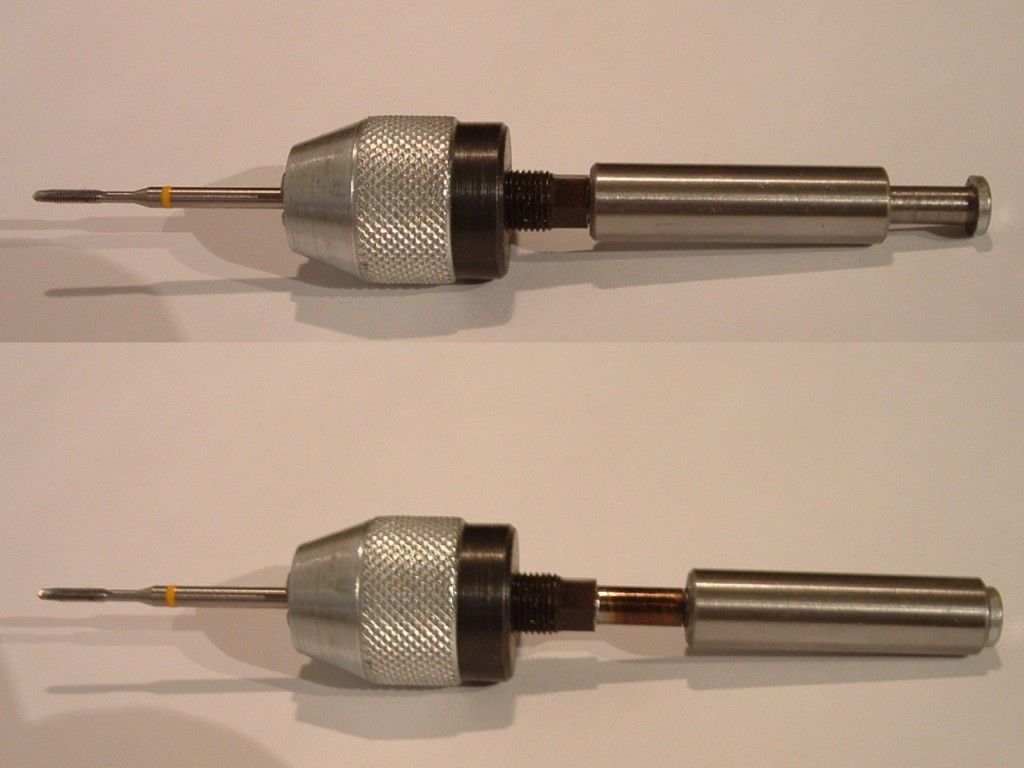- Joined
- Oct 29, 2011
- Messages
- 287
- Reaction score
- 2
I know that this is probably a FAQ, but how do folks go about tapping smallish holes in cast iron?
I was tapping 4BA into a casting today, and the tap got really tight in the first hole; so tight that I was afraid I'd break it, and wasn't able to tap to depth. I'd drilled #33, started with the taper tap, then was finishing with the bottoming tap. I was using Re-li-on cutting fluid (though I did the rest of the holes dry, and that seemed better). I started the tap in the mill chuck, turned by hand (allowing the feed to move as the tap screwed in), so alignment wasn't an issue.
I did manage to tap the 4 holes to depth in the end, but it sure was nerve-wracking! I think the tricks were:
* did it dry, no cutting fluid
* went one size up on the drill (#32, rather than #33)
* made sure the hole is deep enough
* went as far as I could with the taper tap first
So I have the following questions:
1. Is there a rule of thumb for how deep to drill the hole so that you can tap to the required depth?
2. Do you go as far as you can with the taper tap, then only switch to the bottoming tap at the end?
3. Do you use cutting fluid in cast iron?
4. How much flex should I expect the tap to handle? If I can see it twisting, should I stop?
5. Do you grind the points off the end of your taps so that they don't bottom-out in the hole?
Thanks!
Simon
I was tapping 4BA into a casting today, and the tap got really tight in the first hole; so tight that I was afraid I'd break it, and wasn't able to tap to depth. I'd drilled #33, started with the taper tap, then was finishing with the bottoming tap. I was using Re-li-on cutting fluid (though I did the rest of the holes dry, and that seemed better). I started the tap in the mill chuck, turned by hand (allowing the feed to move as the tap screwed in), so alignment wasn't an issue.
I did manage to tap the 4 holes to depth in the end, but it sure was nerve-wracking! I think the tricks were:
* did it dry, no cutting fluid
* went one size up on the drill (#32, rather than #33)
* made sure the hole is deep enough
* went as far as I could with the taper tap first
So I have the following questions:
1. Is there a rule of thumb for how deep to drill the hole so that you can tap to the required depth?
2. Do you go as far as you can with the taper tap, then only switch to the bottoming tap at the end?
3. Do you use cutting fluid in cast iron?
4. How much flex should I expect the tap to handle? If I can see it twisting, should I stop?
5. Do you grind the points off the end of your taps so that they don't bottom-out in the hole?
Thanks!
Simon





